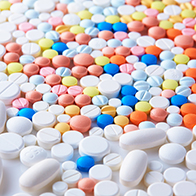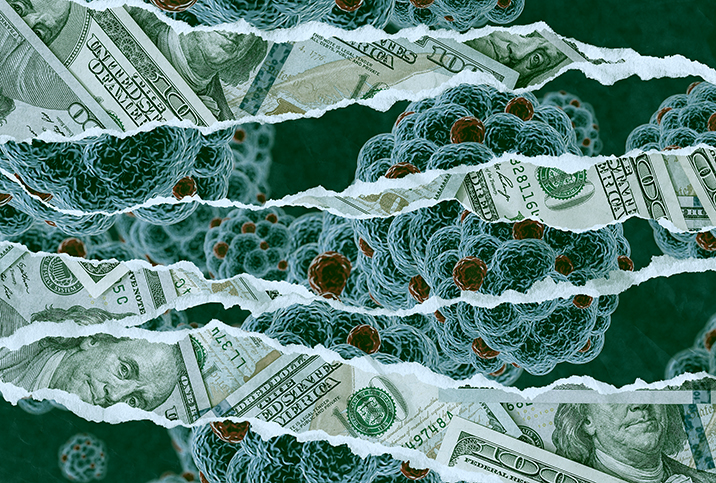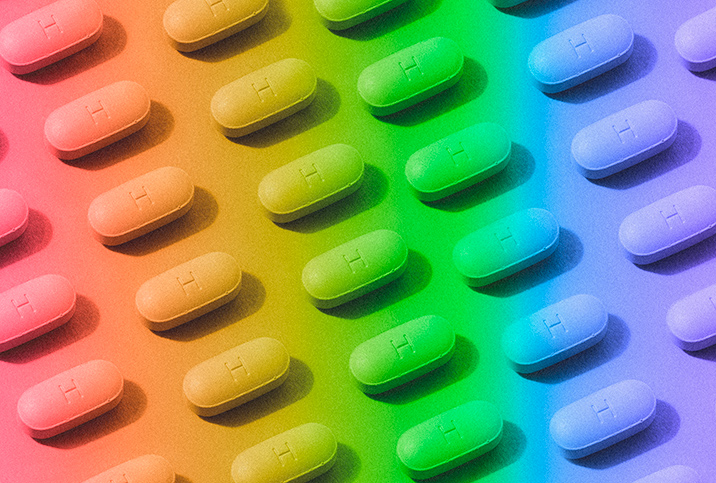A Parent's Guide to PrEP for Teens

I first learned about pre-exposure prophylaxis for HIV infection (PrEP) a few years ago at an information desk squeezed between colorful booths at a Pride parade. My son was 13, and it felt like I still had plenty of time to learn what I needed as a straight mother to a gay child.
But time moves forward much faster than we anticipate, and recently I found myself reaching out to experts to learn more about HIV prevention in order to educate myself and my child.
The current HIV risk in the U.S.
There are about 1.2 million Americans living with HIV (12.6 per 100,000 people), although it's estimated that 13 percent of that number remain undiagnosed. The populations that have the highest percentage of HIV are Black and brown people, men who have sex with men (MSM) and people living in the South.
My son falls into all of these categories.
In 2019, there were 34,800 new HIV infections, an 8 percent decrease from 2015. Much of this good news is because of a 33 percent decrease in infection among 13- to 24-year-olds, even during a time when more teens identify as non-heterosexual.
The U.S. has a strategy to end the HIV epidemic by 2030. Through early diagnosis, antiretroviral therapy treatment (ART), and preventing new infections with PrEP and syringe service programs, the goal is to reduce the number of new infections to fewer than 3,000 per year.
Since 93 percent of HIV infections are acquired from sexual activity (the other 7 percent resulting from the use of unclean needles for drug injection), a pre-exposure medication that is up to 99 percent effective at preventing infection is a tremendous tool in prevention.
(While I'm not focusing on HIV prevention for people who inject drugs, it's worth noting that PrEP is beneficial for this population, too, reducing the incidence of infection by more than 74 percent with consistent use.)
The deal with PrEP
PrEP is a medication for anyone who is HIV-negative and who may be at higher risk of contracting the virus. To be most effective, it should be taken daily, but even if taken only four times per week, it is 96 percent effective for men—more effective than condoms alone.
In contrast, efficacy drops to 85 percent with one missed dose per week for women having vaginal sex, so it is strongly recommended for women to take PrEP daily.
It takes seven daily doses to be fully protected for anal sex and 21 doses for vaginal sex, but there is also a short-term protocol for infrequent exposure for MSM. PrEP can easily be started and stopped based on an individual's needs.
The downside...
There are some side effects to be aware of, the most common being headache, nausea and diarrhea. It can also affect kidney or liver function, decrease bone density or exacerbate a hepatitis B infection. These more serious effects are rare, but it is important to keep all follow-up medical appointments to make sure your body is handling the medication well.
"I personally take PrEP, and I have no side effects whatsoever," said Kenny Screven, a social media influencer and healthcare professional who is working to prevent sexually transmitted infections in LGBTQIA+ youth at @hausofshadez. "If you're going to have any side effects from it, it will probably be within the first few weeks. Also, there is extensive bloodwork before they put you on the medication. That way, healthcare providers can check to see if there are any underlying health issues that may cause a negative side effect [when you start] PrEP."
Another challenge with PrEP is it has to be prescribed by a doctor. This can make it difficult for teens to obtain for several reasons. Besides the stigma with non-heterosexuality and teen sexuality in general, teens are more likely to lack the financial resources or be uninsured.
Further, it's been shown that many LGBTQIA+ youth are more likely to be homeless or in foster care. In many states, teens require a parent's consent to get a PrEP prescription. Even if a teen lives in a state where they can get one on their own, they may be reluctant to do so, knowing their insurance provider will send documentation to the primary policyholder (usually their parent).
Some providers mediate between the adolescent and the insurance company to make sure the medical care will remain confidential.
Talk to your teen about PrEP
The Centers for Disease Control and Prevention (CDC) estimated in 2018 that only 11 percent of people ages 16 to 24 who would benefit from PrEP were actually taking it.
This needs to change immediately if we are going to protect our youth and end the HIV epidemic for good.
To that end, open and nonjudgmental communication will help. Empowering your teen to manage their sexual health will lead to a more confident, educated and resourced person, better able to make wise decisions about their sexual health.
Encourage your teen to talk to their doctor about PrEP before they need it. Understand if there are any roadblocks that need to be resolved (such as a doctor who is reluctant to prescribe), to make the path to getting a prescription smoother.
Empowering your teen to manage their sexual health will lead to a more confident, educated and resourced person, better able to make wise decisions about their sexual health.
In addition, it's important to help your teen understand when it's appropriate to take PrEP.
"I've been taking PrEP for about four years and it's one of the best decisions I've made," Screven explained. "If your teen is headed off to college soon, I recommend looking into the idea just to have that extra layer of protection from HIV when they are alone and able to make adult decisions on their own. I always say it's better to be too careful than not careful enough."
Make sure your teen knows there is a day-of PrEP protocol if they find themself in need of a backup plan. PrEP does not protect them from other sexually transmitted infections, so condoms are still highly encouraged. Frequent HIV testing should continue to be normalized.
One in 5 new HIV diagnoses is someone 13 to 24 years old. While this number is decreasing, we have a long way to go to ensure our young people can live a life free of the fear of HIV.




















